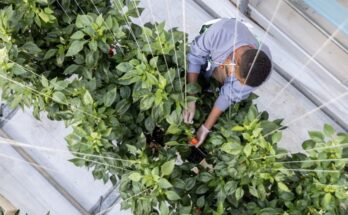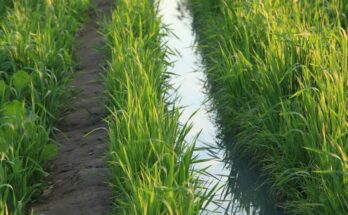Agriculture is the backbone of Indian economy. With farm sector registering a growth rate of 3.4 percent in the first quarter when most other sectors were slowing down, shows the resilience that this sector holds. Experts are calling agriculture a bright spot in the current COVID-19 gloom. When the government had no option but to impose lockdown to contain the spread of Coronavirus, it was feared to be a big blow to the farm and allied sectors. The severe restrictions on businesses, trade and general public movement brought the normal life to standstill, challenging the farm-to-fork supply. The cascading effects caused the reverse migration of labourers following limitation of workforce in urban areas.
The ripples of nationwide lockdown disrupted the rural livelihood and the food supplies. The major farming operations including harvesting and marketing of Rabi crops received a jolt initially. But a joint intervention by the public and private sectors helped in easing the supply chain. The agriculture sector emerged as a bright spot, said the Reserve bank of India (RBI), and is a leading factor in the country’s economic recovery. The agriculture sector now needs to leverage in the process of the recovery and usher in new era of growth, development and farmer welfare.
How Indian agriculture sector managed to pull off positive growth despite the challenges posed by the pandemic? In the first phase of the lockdown, the government eased restrictions for farmers, inter-state movement of agri inputs, allowing harvesting activities and transportation of foodgrains to wholesale markets while the Food Corporation of India (FCI) continued with procurement despite the challenges. Over 389 lakh tonnes of wheat procured by the FCI this year, which is higher than that last year’s 341 lakh tonnes. Similarly, other major crops such as chana (gram), mustard, arhar (pigeon pea) were bought by the government agencies from farmers on time.
Despite the adverse conditions, the sowing area under the summer crops saw year-on-year increase of 38 percent to 57.07 lakh hectare. Even the area under Kharif crops this monsoon has seen 2.6 percent increase to 1,095 lakh hectares compared to the last year’s figures. The migrant workers who returned to their native villages appeared to have taken up agriculture in the previously fallow or uncultivated lands. The assertion can be supported from the data issued by the Centre for Monitoring Indian Economy (CMIE). As per news reports, employment in farming rose to 14 million by August 2020. The optimum monsoon rains also did complement the efforts of farmers this Kharif season. The monsoon which was weak initially made a comeback and ended with 109 percent more than average rainfall.
In order to provide relief to farmers during the lockdown, the Central government as well as the state governments intervened with remedial measures. Besides, the Central government’s big relief package of 1.7 lakh crore, many states offered assistance and support to farmers. The Uttar Pradesh government amended the Mandi Act, allowing farmers to skip the APMC mandis and sell 46 fruits and vegetables directly in the open markets. Madhya Pradesh too allowed food processing companies, exporters and wholesalers to buy directly from farmers. Karnataka exempted cooperatives and farmer producer organisations (FPOs) for agriculture trade outside the market yards while Tamil Nadu removed market fee on all notified agricultural produce. Uttarakhand declared warehouse, cold storage and processing plants as sub-mandis. The collective efforts worked in the favour of agriculture sector.
With the new farm laws in force, we must seek for opportunities in the current crisis for innovative approaches, which may lead to lasting changes. Some of the area of focus can be on boosting crop productivity, strengthening mechanisation and technology in agri processes as well as increased participation of corporates. Use of smartphones, digital tools and entrepreneurial efforts and e-commerce can make farm operations and supply chain smooth and robust in the long term.
(Views expressed in the article are author’s own.)





quality content is what always gets the visitors coming. thanks for taking the time to post such a valuable information.